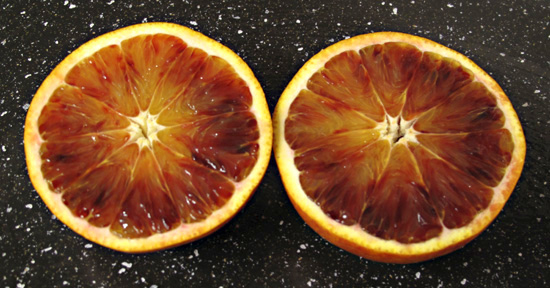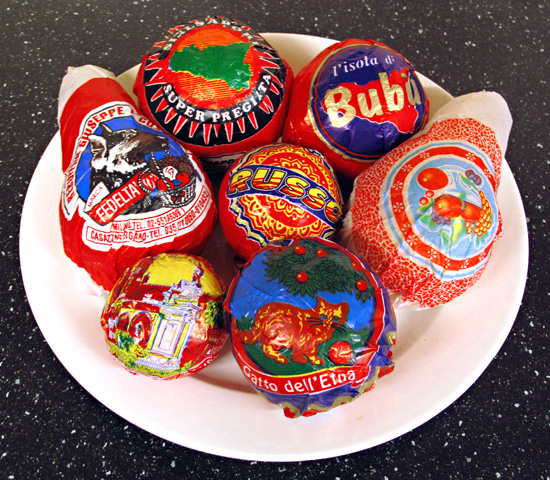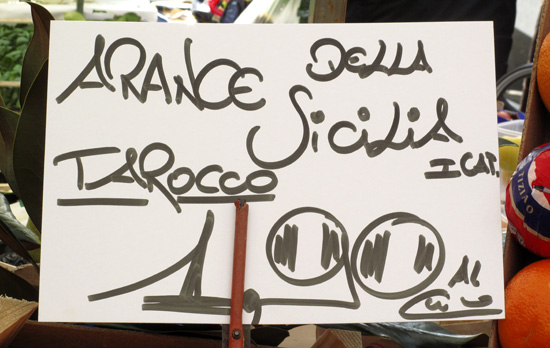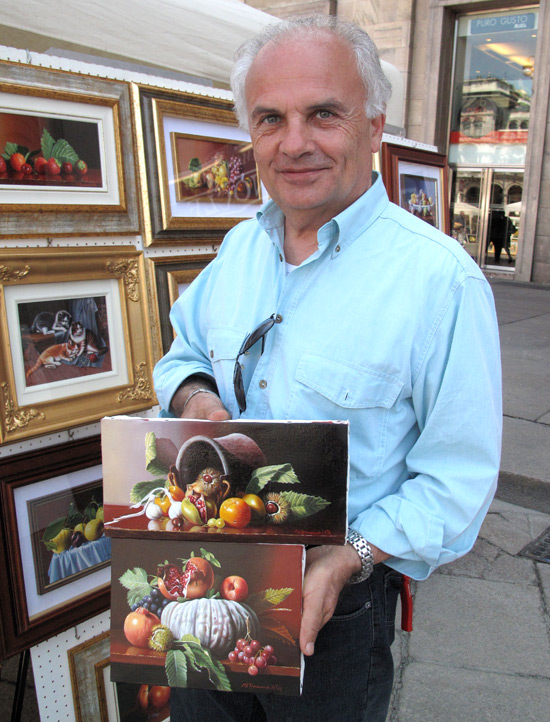
by Maureen | May 23, 2010 | Discoveries, Featured Articles, Graffiti & Street Art, Journal, People, Photo of the Day, Photos
It was another sunny afternoon and a good time to go to the Piazza del Duomo to wander around. I hadn’t known that there was a sidewalk art sale going on. Much of the work was very mediocre, as if the artists were uncertain. I saw the work of a few painters that showed surety, fresh thinking, sophistication and a developed style. And then I saw Nino’s work, and it stopped me.
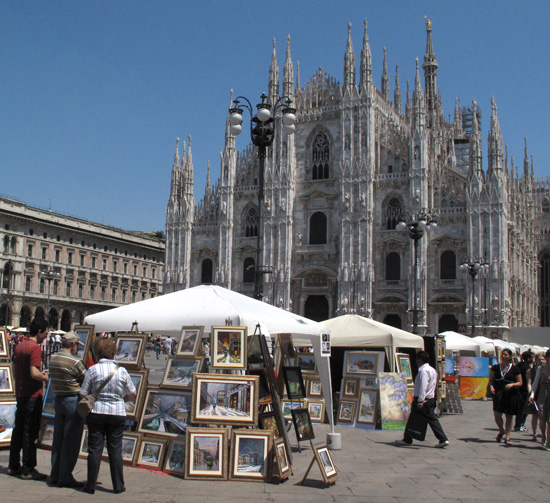
.

In the last year I have seen so much art of the old masters in the great museums and galleries of Italy and France. Portraits, landscapes, abstracts… and still lifes. When I saw the small oil paintings of Nino L’Annunziata, I could have been in the Uffizi or the Louvre. He has a finezza, a fineness, an eye and hand, a sense of color and detail that I don’t often come across in contemporary painters, especially in a casual sidewalk display. Nino has skill, control and certainty that elevate him to “contemporary master”.
We talked for about 45 minutes in an engaged, pleasant chat. We gave each other the classic two-cheek kiss, said goodbye and I walked away with two of his small paintings. When I take them back to Seattle, they will bring to mind a pleasant connection with a fine artist on a sunny, early summer day in Italy. And I will smile.
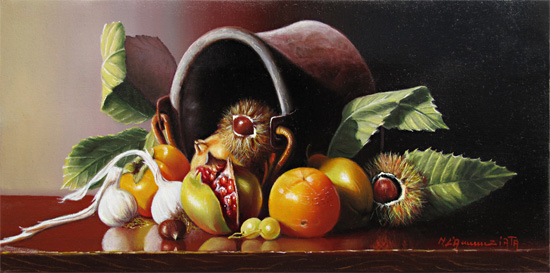
.
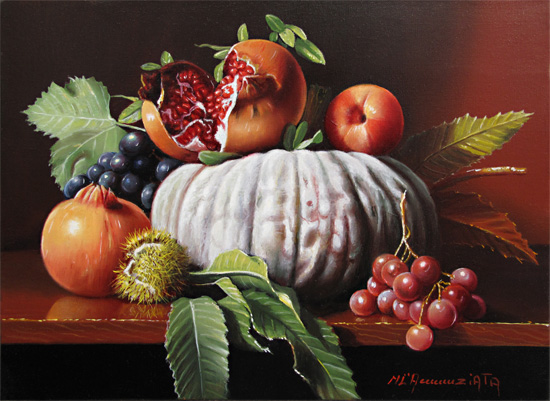
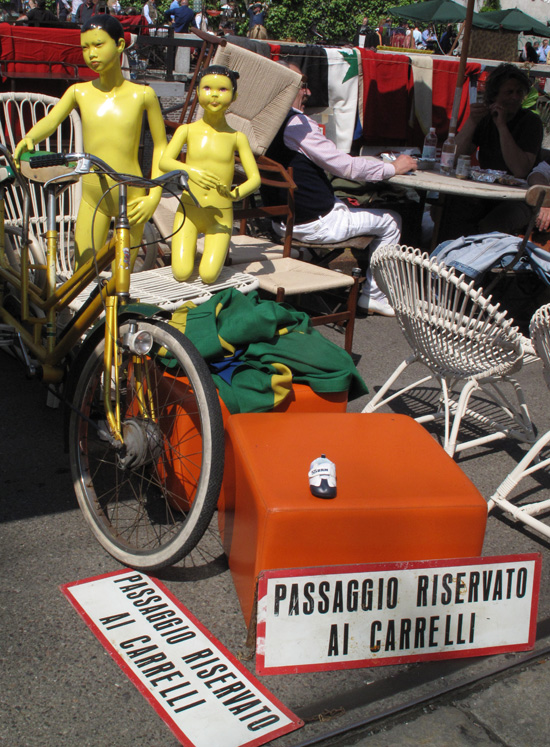
by Maureen | Apr 26, 2010 | Canals, Discoveries, Featured Articles, Journal, People, Photo of the Day, Photos, Shopping & Markets
On the last Sunday of the month, one can browse Antiques and Flea-Market-Finds for as far as the eye can see (2 kilometers), on both sides of the Naviglio Grande, the Grand Canal. (This canal intersects with the Naviglio Pavese, the one I ride my bike along.)
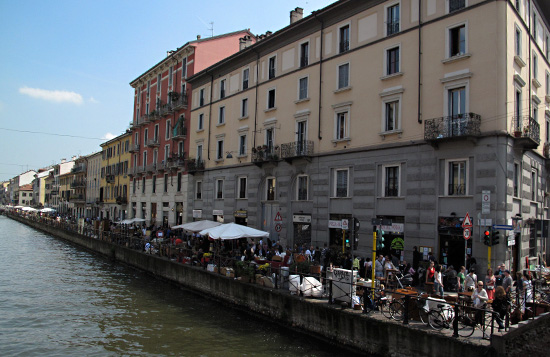
.
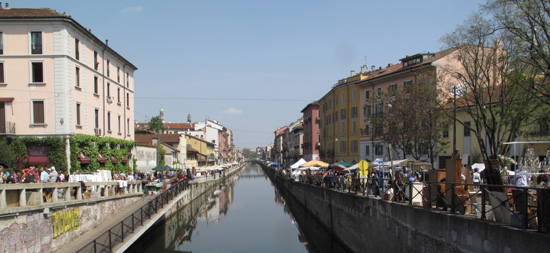
.

There is still some limited boat traffic along the canal when they’ve let the water in.
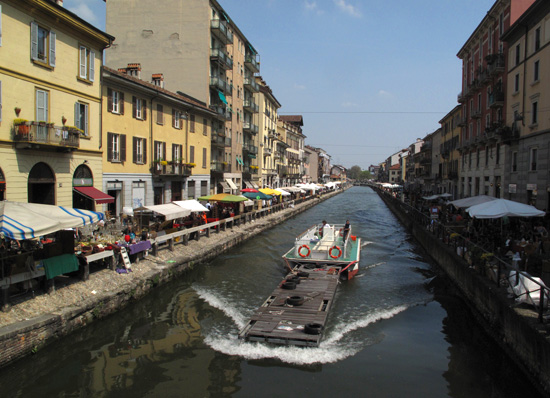
The antique sellers’ stalls also stretch far out into the side streets that branch off of the canal.
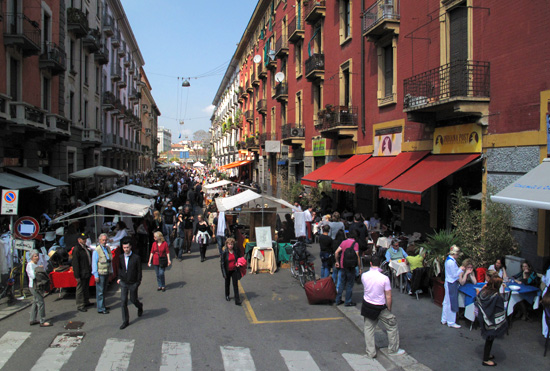
Linens? Oh yes. I find plenty. And they’re gorgeous. And the sellers know what they have and charge prices accordingly. There are few, if any, “steals” here. But the high quality linen and cotton, with the embroidery and open-work stitching, are superb examples of the old European linens. (I would love to buy them all up… but for what?)
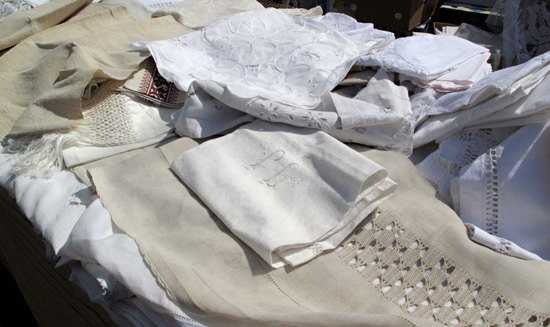
.
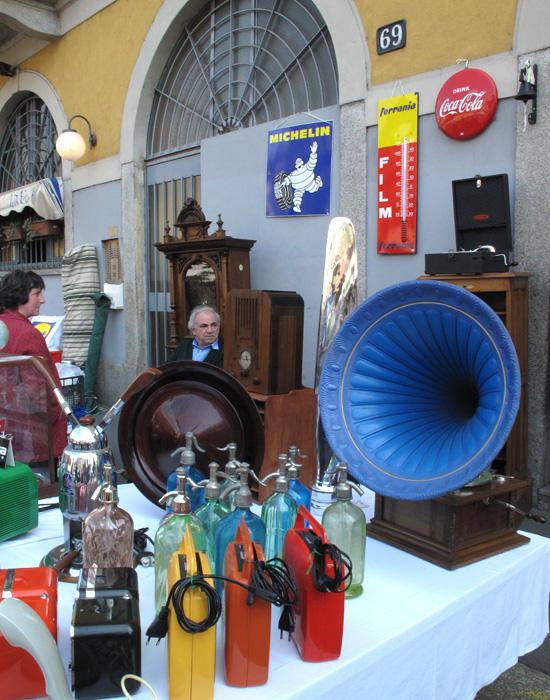
.
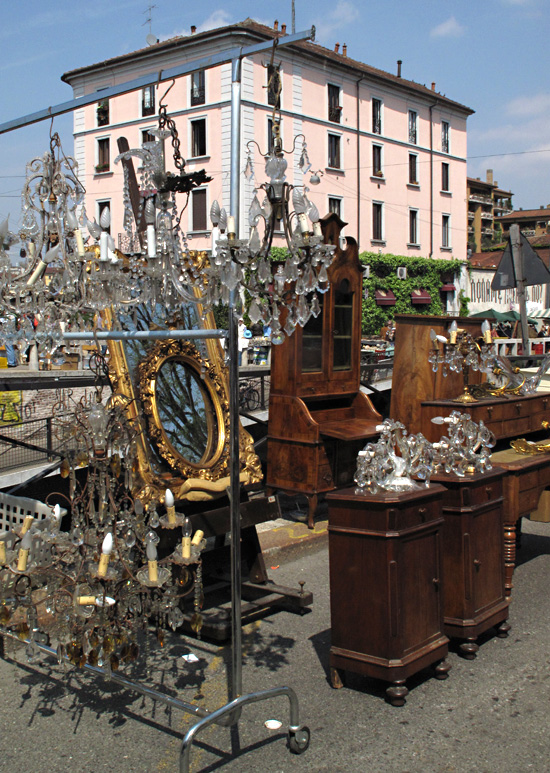
.
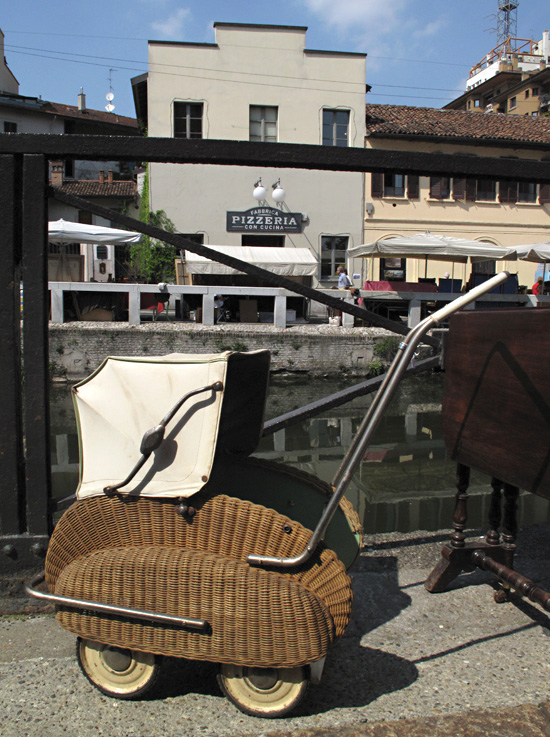
.
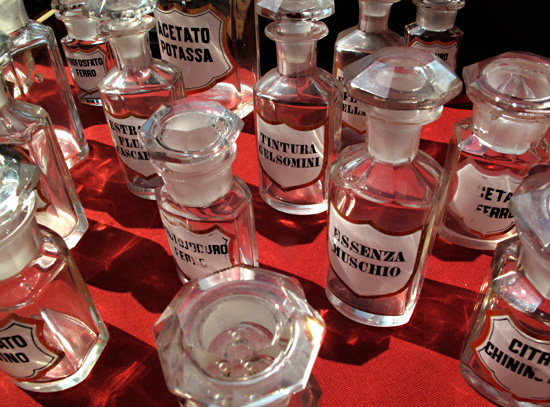
Beautiful, finely-crafted instruments of all sorts! The asking price of this Astrolabe was 700 Euro. (Cough, cough. Roughly $1000 right now.) But it was lovely.
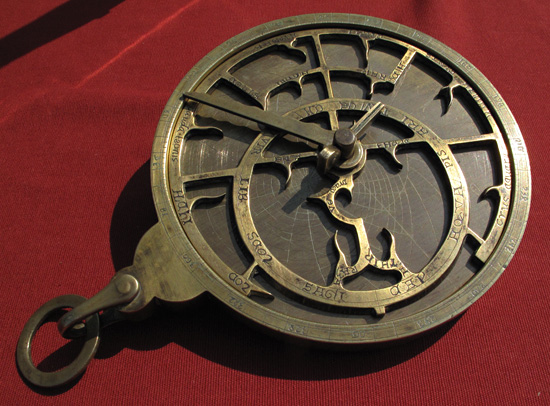
I don’t even know what this Parisian instrument is.
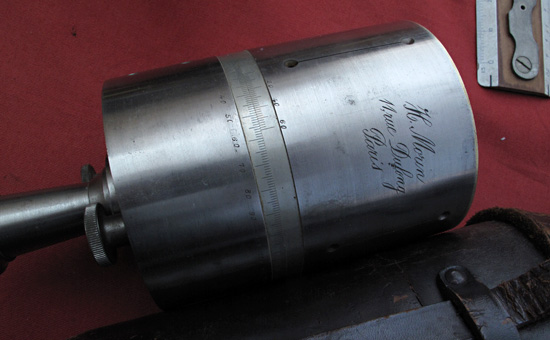
These look like porcelain portraits of Mao and his family.
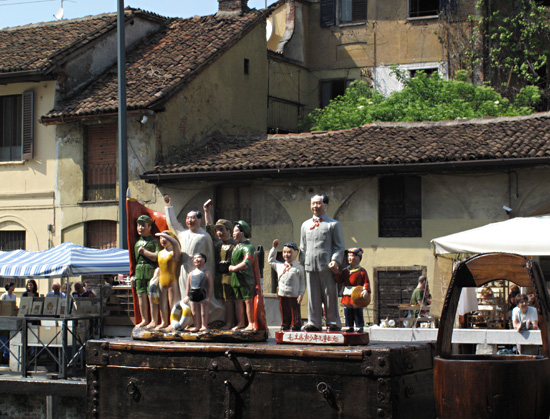
An interesting assortment of portraits.
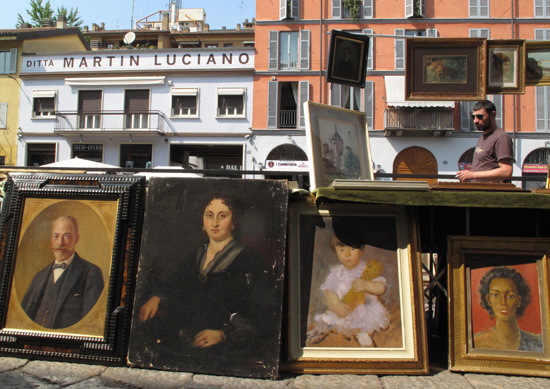
It is startling to me how often I see the American flag, or some representation of it.
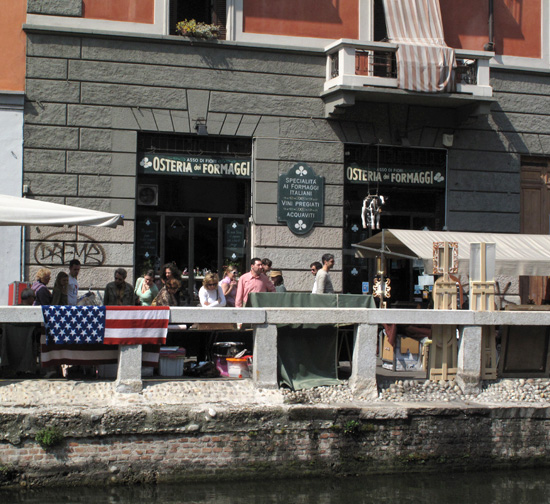
Isn’t this luggage out of the stereotypical “Italian Holiday Travel Movie”?
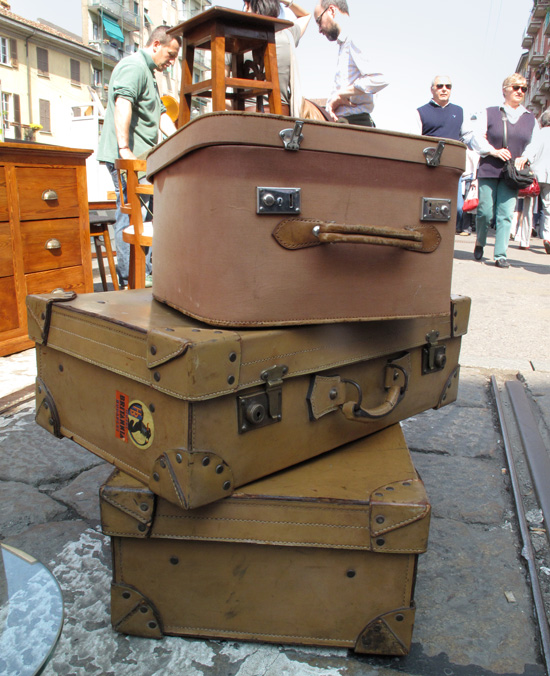
The dog matches the upholstery. I missed him at first.
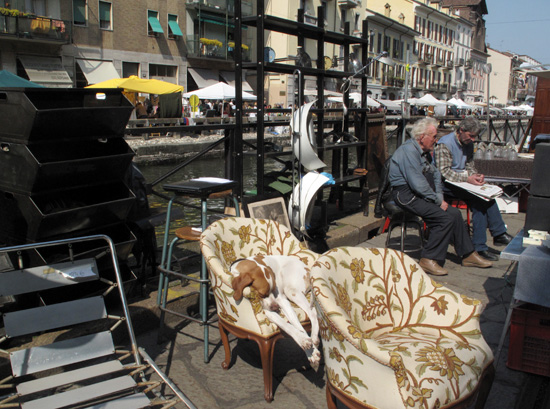
.
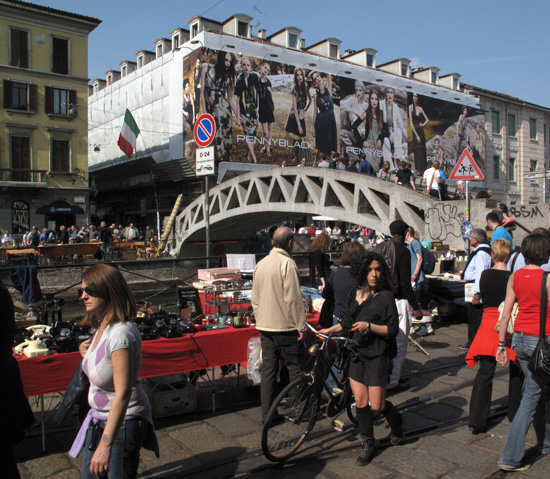
Smile. I’m on Candid Camera (for my Seester.)
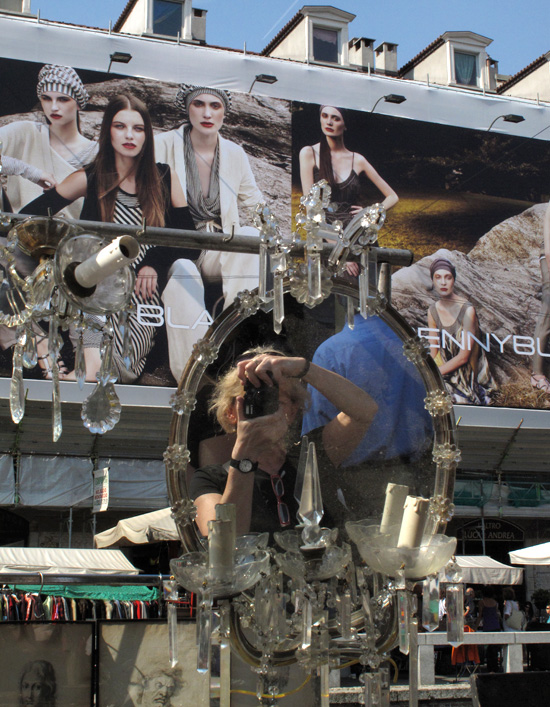
.
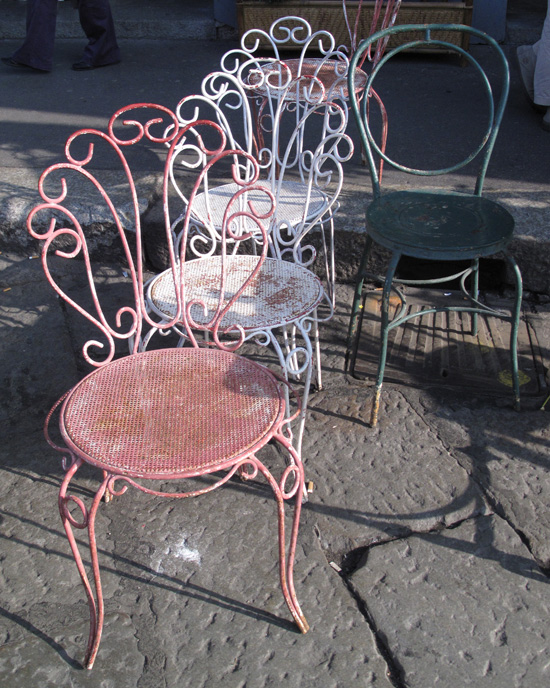
This guy sold horse figures of every sort.
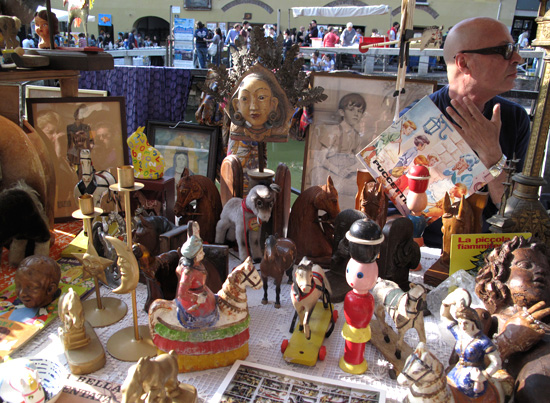
I had been walking around for hours and stumbled upon some finds. “How much for this group of papers and books?” “50 Euro.” “How about 40?” How about 45 and you let me buy you a drink.” I laughed. It caught me completely by surprise. I bought the papers and books for 45 Euro and Graziano and I stepped 10 feet across the cobblestone and had a glass of cold white wine at a Sushi Bar on a hot afternoon and talked for a little while. So funny. But it was a pleasant and charming break.
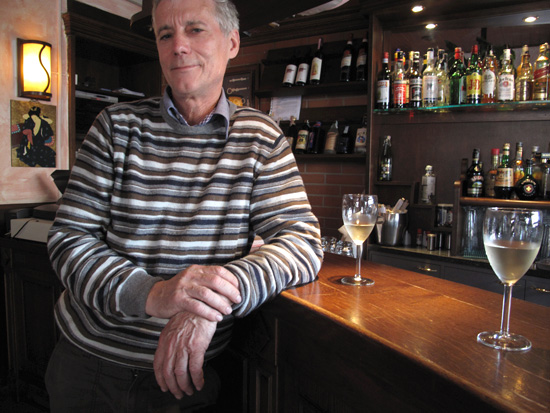
Cool hat box. (Cool typography.)
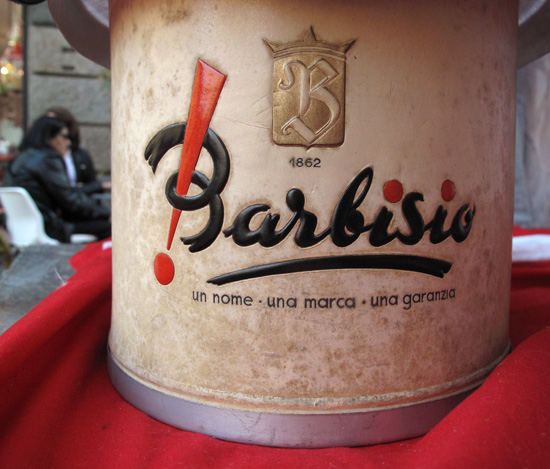
As the warm afternoon waned, the cafés started to fill with people enjoying the Milanese aperitivo. The musicians showed up in the old Vicolo dei Lavandai, the washing station of the 19th century where women gathered to scour their clothes against washboard stones as their wash water flowed off into the canal.
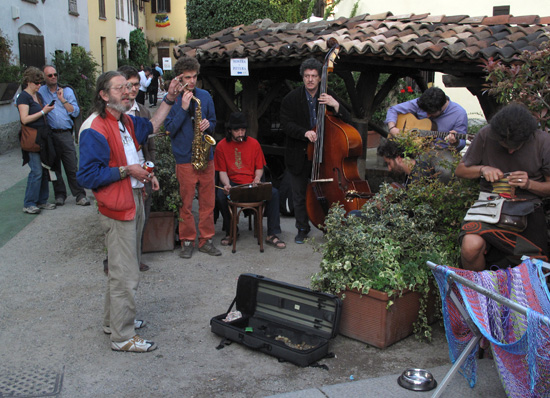
Who’da thought I’d see this?! Wait! I should have bought the one a few issues back: Settembre 1957!
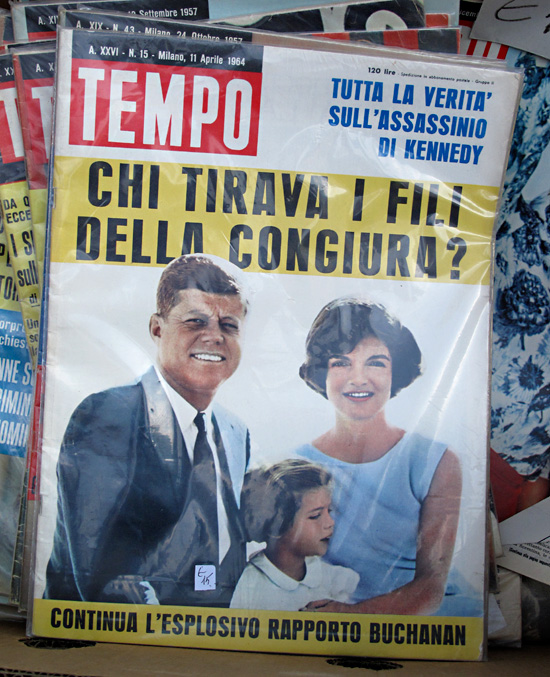
Packing up to go home, this man still wore hat, bow tie and white coat as he packed his lamps into a salami box.
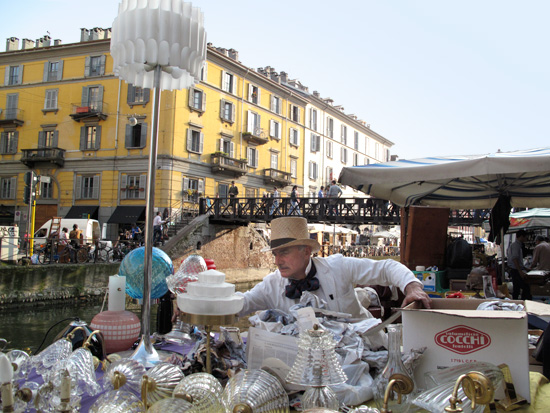
So now, do you have an idea of what’s for sale at an Italian Antique/Flea Market?
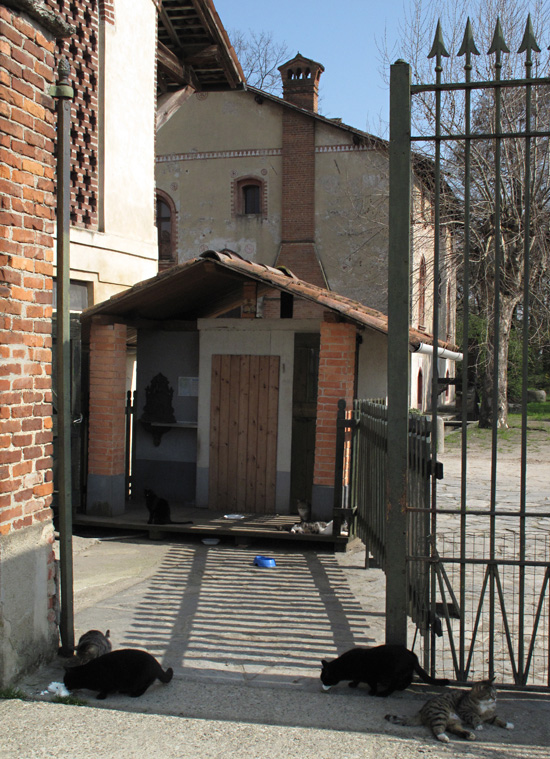
by Maureen | Apr 7, 2010 | Canals, Cheese, Discoveries, Featured Articles, Food!, Journal, Photo of the Day, Photos, Shopping & Markets
Wednesday is “ricotta day”, the day they make fresh ricotta at the Cascina Femegro.

Even though I had just been there yesterday, a sunny afternoon and the thought of hours-fresh ricotta on some nice bread easily convinced me to hop on my bike. I headed south along the canal, and turned west into the farmland.
There are old, stone troughs spanning the drainage ditches that wind through the farmland.
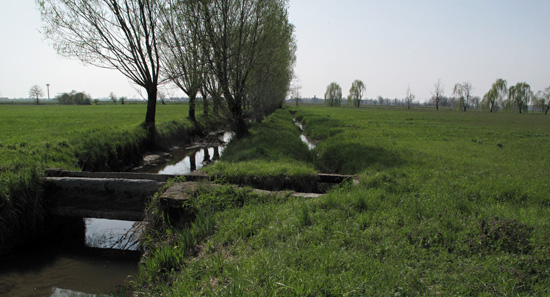
The one-lane road is cyclists’ heaven. Add sunshine overhead on a spring day, and it’s perfection.
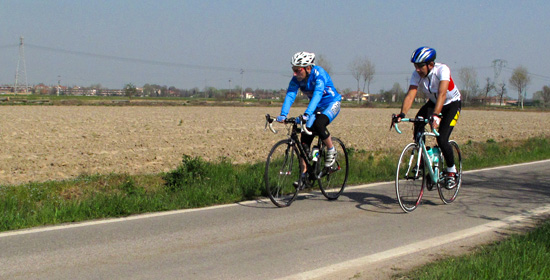
I bought 4 tubs of cheese: 1 for me, and 3 to give away to friends. I had no idea at the time that “friends” would include 9 cats in a lazy-but-playful huddle at another farm along the way home. They very cautiously came over to me as I crouched at the road side, did the “kitty squeak” and rubbed my fingers together trying to entice them. I’ve seen them there before, either on or under the roof of the small outbuilding at this historic building. The most affectionate was the tabby mamma cat that wallowed in the attention.

“OK”, I thought, “The ricotta was cheap. These kitties would enjoy it so much.” Yes. I unwrapped a domed mound of ricotta and split it up into several locations, allowing the timid cats to have a bite to eat away from the more dominant cats. After eating ’til their bellies were full, each found a spot in the sun and did their contented cat preening.
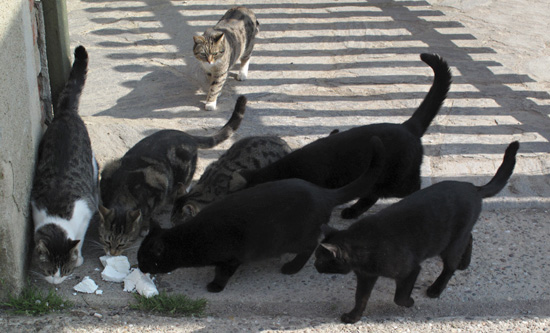
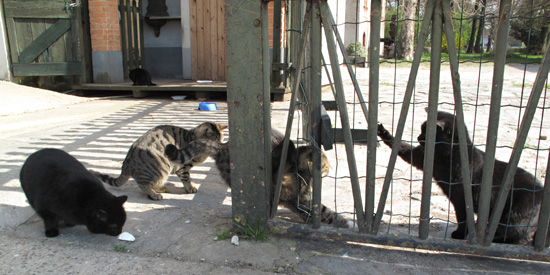
It was nice to get my “kitty fix” since I’m catless here in Milano (and since my kitty, Laddie, has died back in Seattle during my absence).
I wonder what the farmer will think when he finds the empty ricotta tub, and some remnants of cheese…
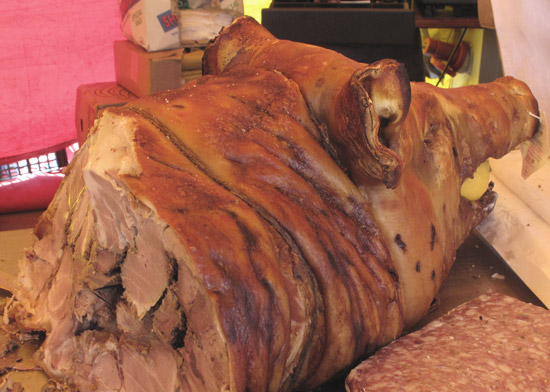
by Maureen | Apr 1, 2010 | Cheese, Discoveries, Featured Articles, Firenze, Food!, Incredible Locations, Journal, Photo of the Day, Photos, Shopping & Markets
After the flea market at Piazza dei Ciompi in Firenze last Sunday, I walked a few blocks further and saw yellow-tented stalls. Hmm. A food market: cheeses, meats, breads and a few other goodies. Some from Toscana (Tuscany), Firenze’s region. Some spicier ones from the south.
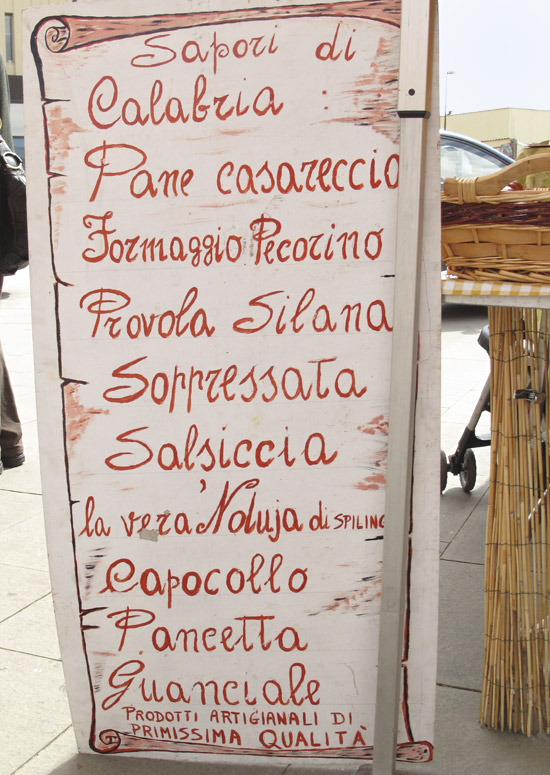
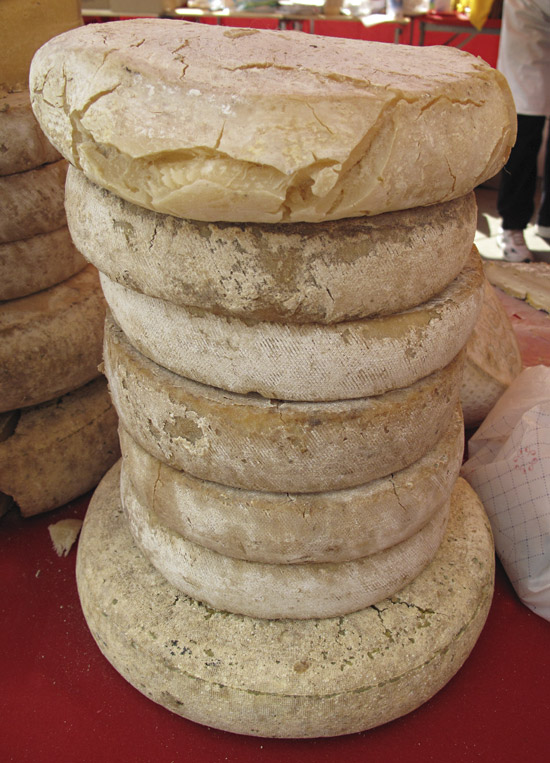
‘Nduja is a casing-stuffed meat that is spicy and spreadable. Very nice with good bread.
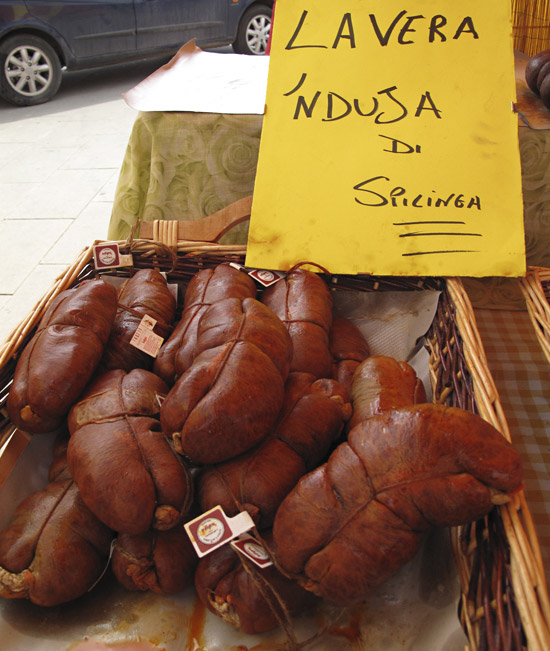
“Do you have a problem with cholesterol? Diet? The solution is Tometta (cheese) of 100% pure goats milk. Lower fat content.”
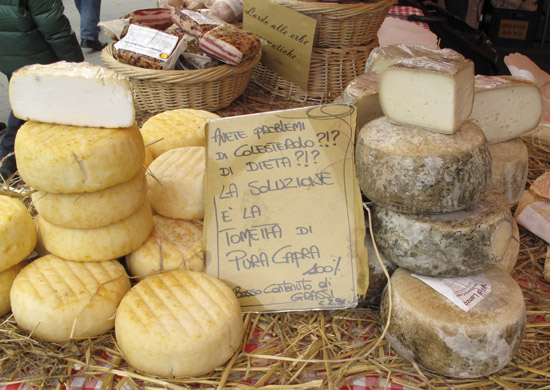
How about some deer meat salame?
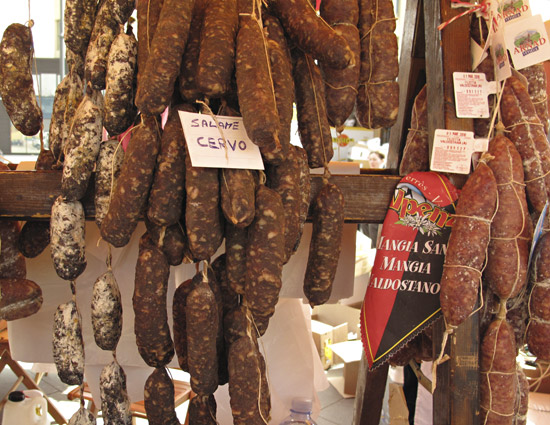
I sampled gorgonzola mixed with black truffle and bought a little tub of that to take home. Sampled from a big round of pecorino. Then walked up to a meat vendor that fed me enough samples that I didn’t need lunch. They offered huge, cased, cured meats from which they’d shave a piece and use the knife to hand it to me: prosciutto, porchetta, salame, soppressata. I tried them all, peppered and mild, whole, ground and chunked and knew I wanted to buy a piece. After all the samples, I was indecisive because I liked them all, but I bought soppressata.
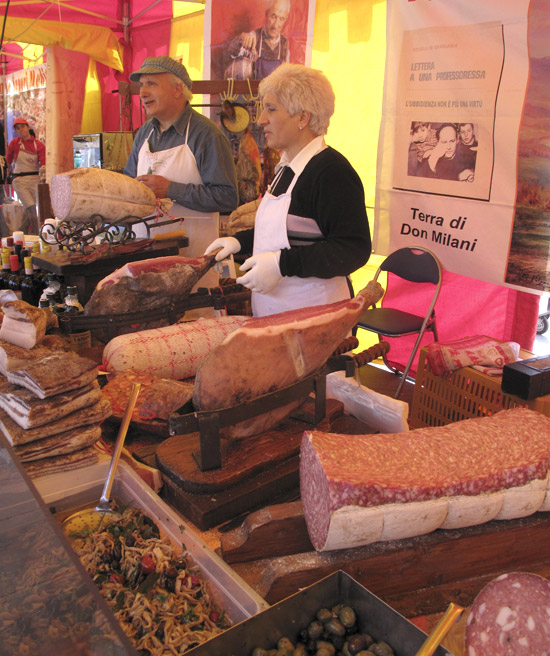
In the photo below, soppresatta is the large-chunk round near the black-rind cheese.
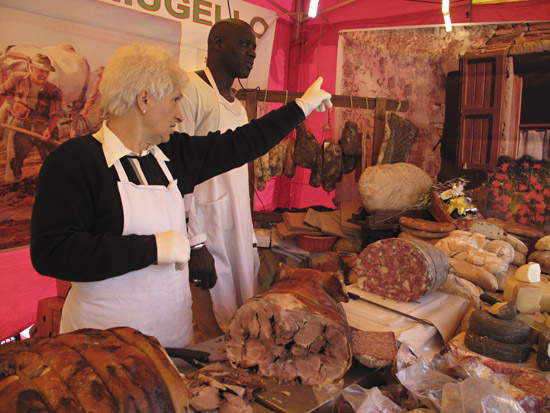
In nine months this is one meat I hadn’t tried yet because it’s a Tuscan meat and not so common up north. My markets don’t offer it. Soppressata is made of the left over parts of the pig: cartilage, tongue, head scraps… you name it, nothing’s wasted. The head is boiled for a few hours then picked of meat, skin and all “edible parts”. All of the picked bits are chopped large, seasoned, and stuffed into a casing about 10″ across. The broth from cooking is poured into the casing to cover the meat parts. It is then hung and the liquid thickens and binds everything into a solid. (In the U.S., it might be called “head cheese”.)
The soppresatta that this vendor offered had a nice peppery bite to it. Soppressata omelette? Soppressata burger? “They” are saying that soppressata pizza is the new big thing. I believe it.
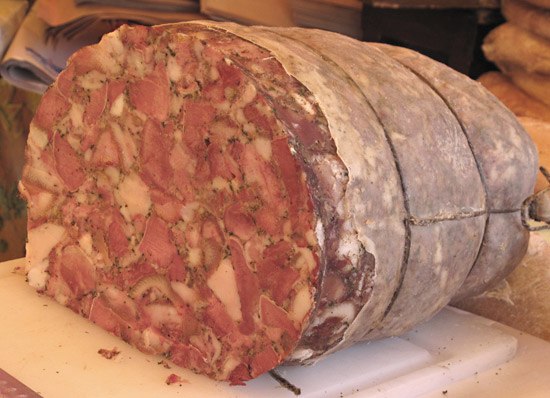
Here’s the front end of the porchetta – roast pig.

With gorgonzola and soppressata in my bag, I continued walking. I should have bought a nice Tuscan bread to bring home on the train, but didn’t. I’ve always marveled at these HUGE loaves I see at the markets. Ask for some bread and they just whack off a chunk. These loaves are about 4 feet long.
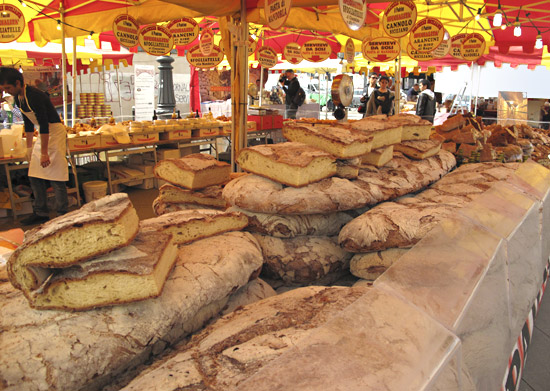
And look at this green olive bread!
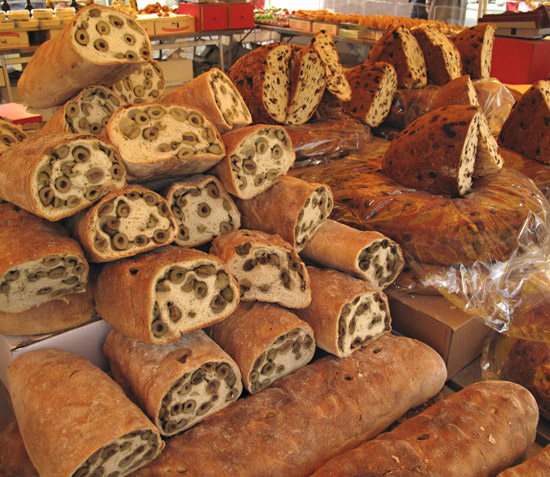
This Toma cheese is so beautiful to look at.
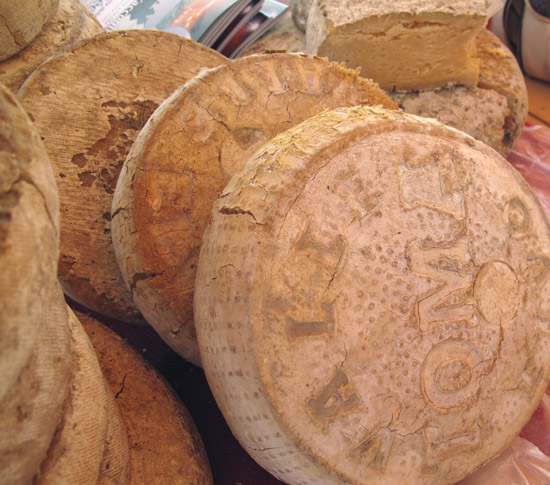
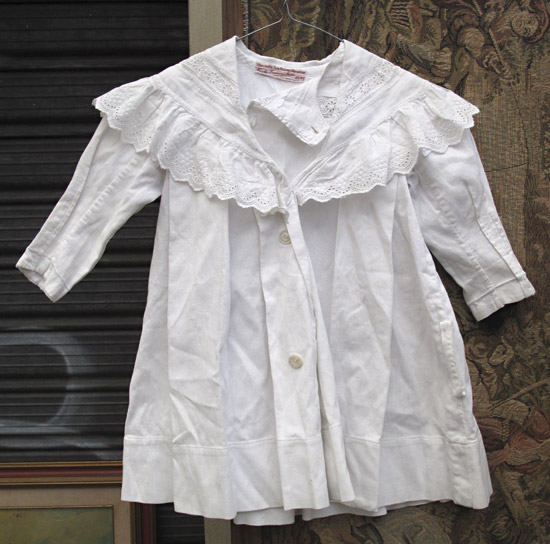
by Maureen | Mar 30, 2010 | Featured Articles, Firenze, Incredible Locations, Journal, Photos, Shopping & Markets
A month ago I was given a hot lead from a girlfriend in Seattle about flea markets in Firenze. What I uncovered through some digging was that the “hottest” market happens on the last Sunday of the month, in the Piazza dei Ciompi, just a few blocks’ walk east of the Piazza del Duomo. OK. That little fact determined the timing of my return visit to Firenze.
I even set the alarm Sunday morning(!), ate a quick breakfast and started walking the mile to the piazza. Along the way, I kept seeing people carrying branches and scratched my head over that. Hmm. Oh! It was Palm Sunday but they were carrying olive branches, not palms! I stepped into the Basilica della Santissima Annunziata mere moments before mass started and witnessed the procession of priests and parishioners.
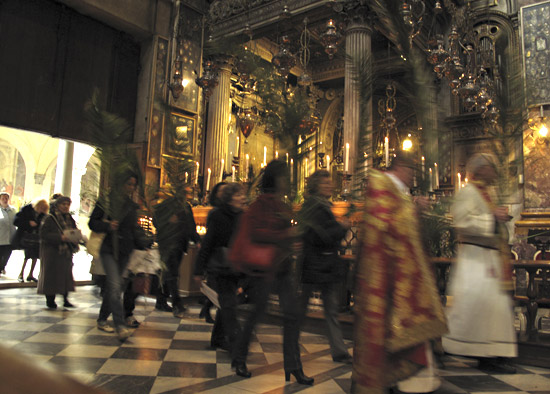
The portico between the church and the “cloister of the dead” offered a heaping bale of olive branches, so I plucked a few little twigs to carry in my pocket, then continued my mile walk.
When I arrived at the Piazza dei Ciompi, I found many of the things I expected AND I found most everything I was looking for. On the last Sunday of the month, the flea market spills out into the side streets, populated by many of the local antiques dealers surrounding the piazza. There are the vendors that know what they have and charge high prices accordingly. And there are those that have a mixed pile of junky tidbits with a “treasure” tucked in here and there. The concept must be universal among flea markets and swap meets.
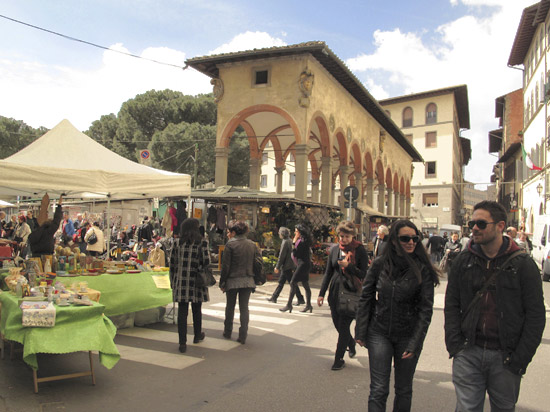
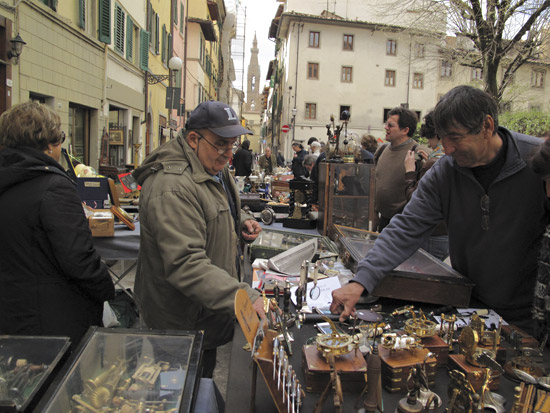
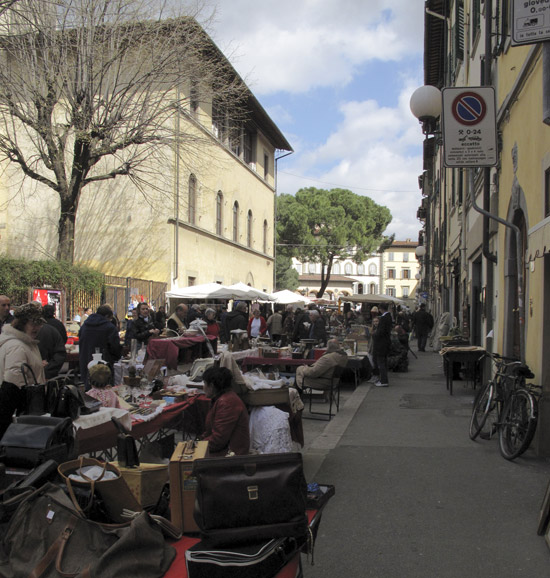
Of course there were iron pieces, linens, books, figurines, clothing, costume jewelry, housewares and miscellanea. What I went in search of were red-stitched linens (thinking of my great, great grandmother and Frette linens) and old penmanship guidebooks. I found both! What I didn’t find are the meat and milk signs like I’ve seen hanging outside markets around the country. I’d gladly hang them outside my door at home in Seattle!
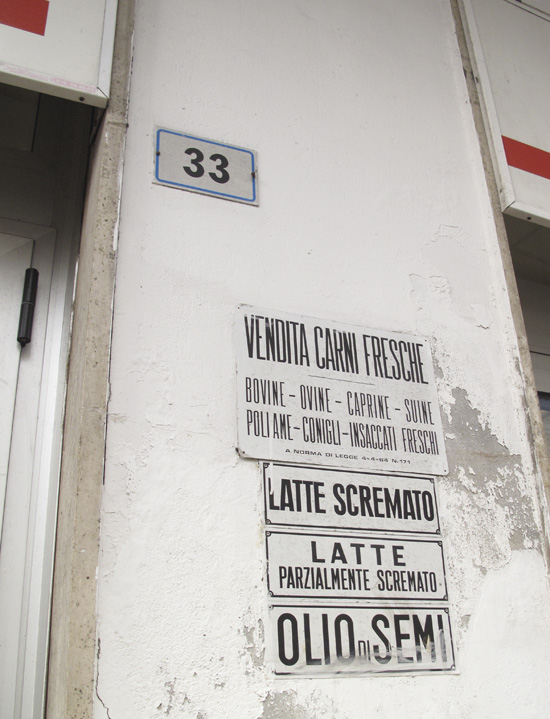
Look at these hat forms! The vendor had about a dozen of them. Many different hat shapes. Beautifully-sculpted hardwood! If I remember right, they were selling for about 80 euro each (about $107).
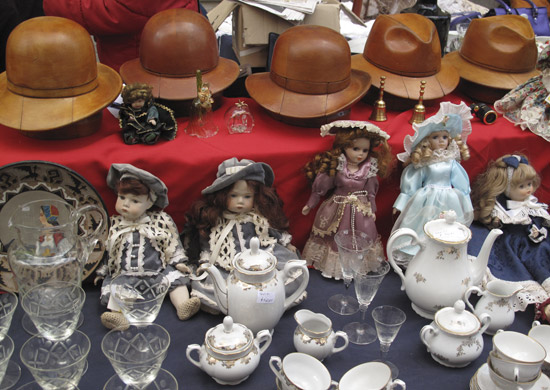
Years ago, both of my Grandmas let me paw through their button boxes and select my favorites. I now have a collection of thousands of buttons, especially mother-of-pearl. I dig into my collection when I’ve sewn something and need just-right buttons. When I saw these boxes full of buttons, I was hopeful, but in the end unwilling to pay 50 cents per pearl button.
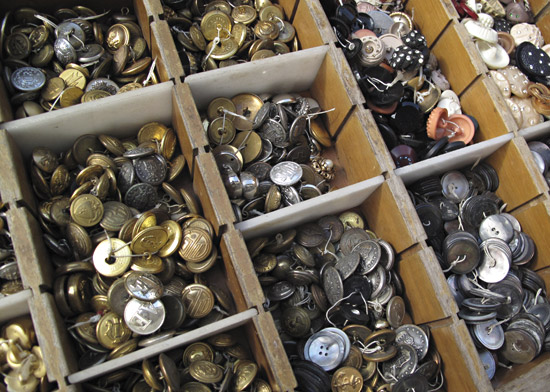
This lovely, white, cotton-with-eyelet dress from Roma was hanging toward the back of one seller’s stall. Darn. It wasn’t for sale. I would have brought it home to little 5-month-old Audrey, whom I haven’t even met yet (!)


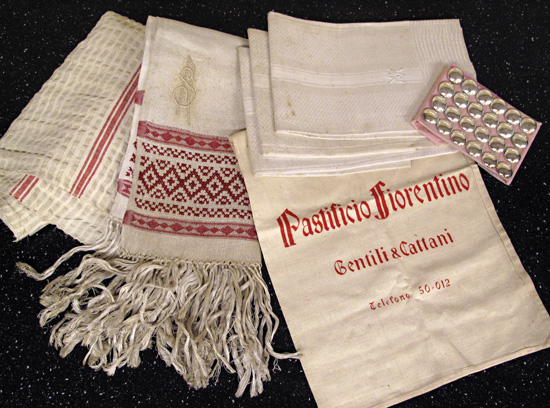
by Maureen | Mar 30, 2010 | Discoveries, Featured Articles, Firenze, Incredible Locations, Journal, Photos, Shopping & Markets
It was as a Camp Fire Girl in fifth grade that I learned to sew by stitching along the lines of binder paper. I’ve been sewing by machine and by hand ever since and fabric is one of the things that makes my heart rate pick up. (Literally.) So, put me in a place where I can find antique fabric, handwork and sewing “notions” and I think I’ve gone to heaven. I passed up some red-on-white cross-stitch samplers from the late 1800s either because they weren’t well-wrought, or the price was higher than I was willing to spring for. I did bring home this little bundle which I will wash up and actually use: embroidered hand towels and napkins, sterling buttons and a muslin flour sack. (I’m easily amused.)

Can you believe I found MY initials embroidered?!
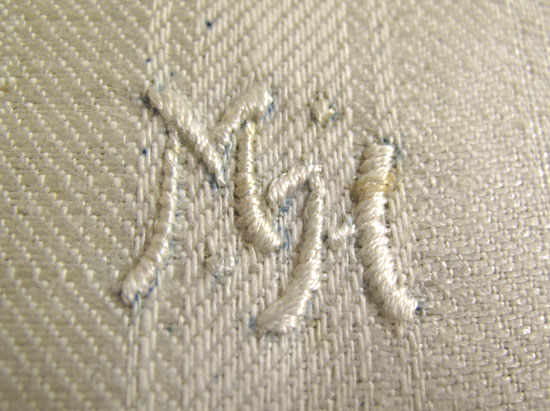
There was a box of about 10 dozen sterling silver buttons produced for Italian military uniforms. Each is marked with “Milano” on the back, which I think is more beautiful than the high-polish front. (I’ll take steel wool to the surface to rough them up, then use them on a special jacket I’ll make.)
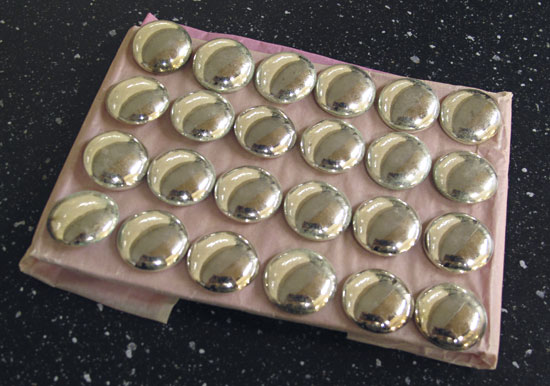
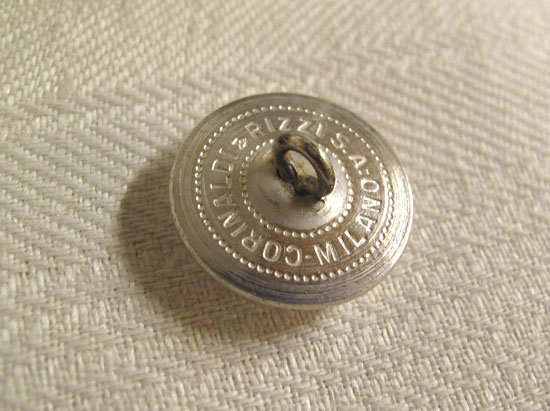
This is elaborate raised stitching on the damask, woven patten.
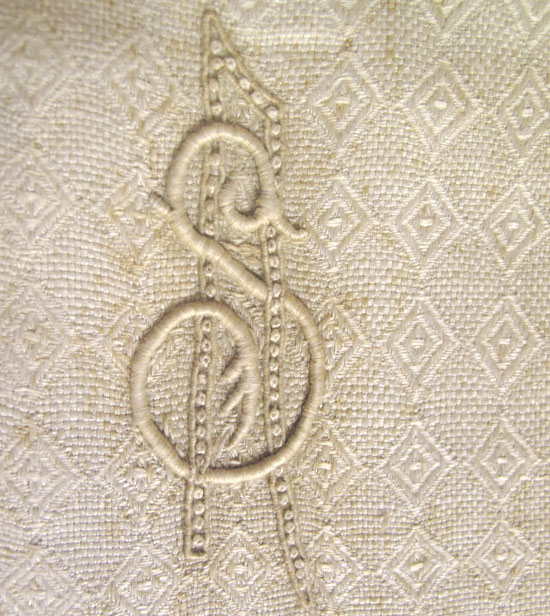
This fringed towel features hand-wrought, counted cross-stitch in between two woven borders.
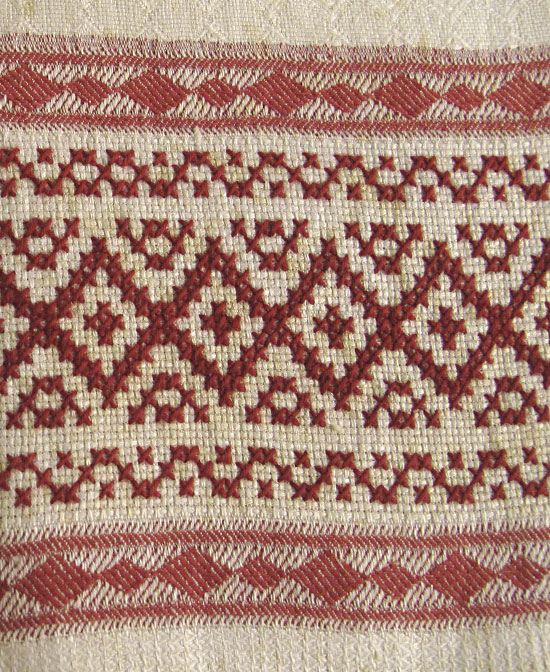
This was a sign on the door of a little shop where they do “polishing, lacquering, restoration and gilding” and sell antique furniture and frames. “Excuse me, would you be willing to sell your sign?”
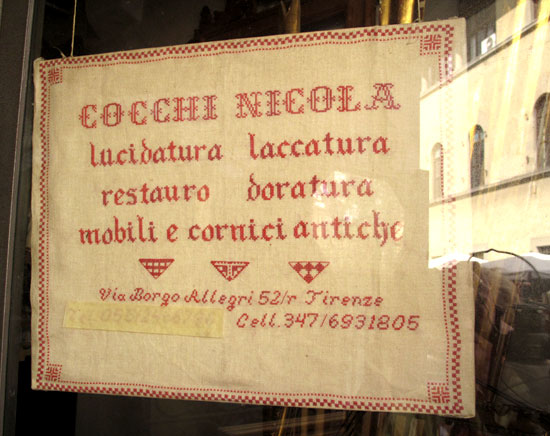
The sellers of this piece were out to lunch. I waited around but they didn’t return, so I simply photographed it. This is a religious symbol for Mary, Mother of God. The “AM” monogram stands for “Ave Maria”. I’ve seen this symbol other places in Italy, such as the cathedral in San Giovanni Valdarno when I was there 2 years ago.
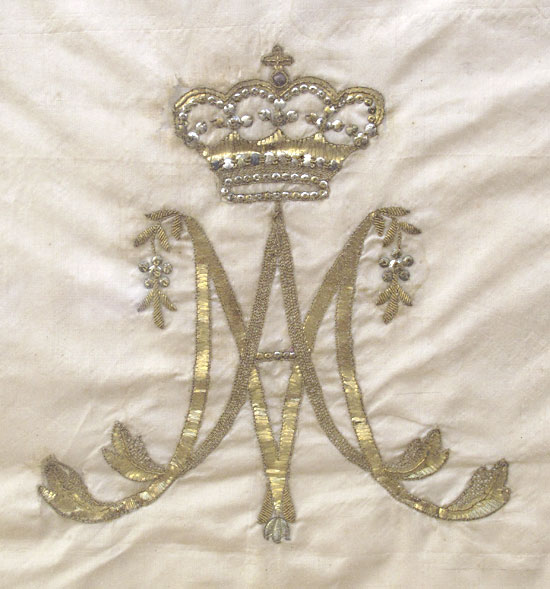
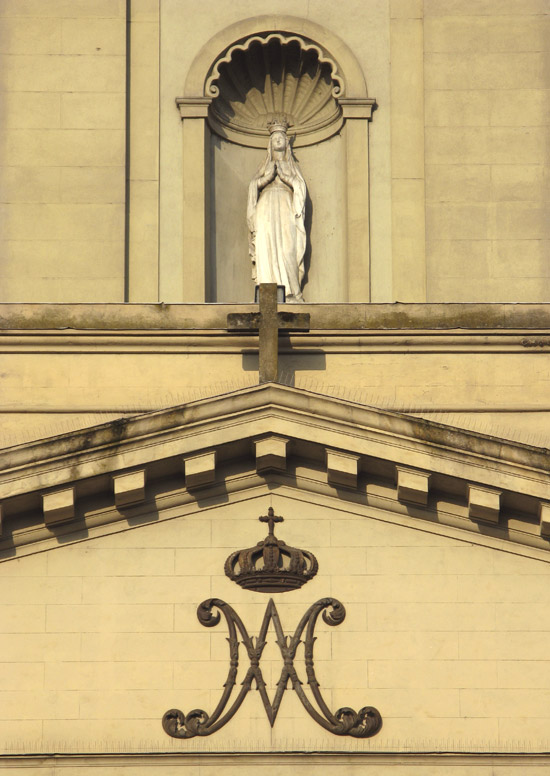
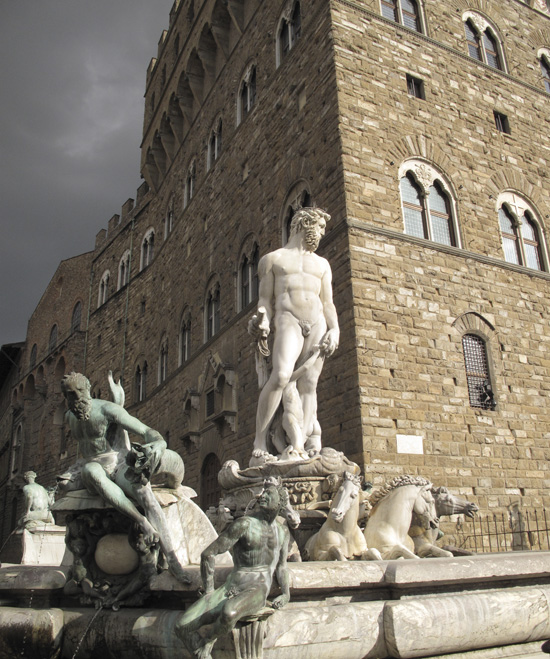
by Maureen | Mar 30, 2010 | Discoveries, Featured Articles, Firenze, Food!, Incredible Locations, Journal, Meals, Photos, Shopping & Markets
If you haven’t been to Firenze (Florence), put it on your “life list” of must-see places in the world. Really.
Two years ago I spent a couple of afternoons exploring Firenze, but I hadn’t been back since I returned to Italy last June. So I hopped on the train late last Friday morning, and less than two hours later, at 1:00, I arrived in Firenze and smiled. I walked from the train station to my hotel shooting photos along the way because I couldn’t wait until I put my bags down. I checked in, changed my clothes for the bit of humidity under the partly sunny skies, then left and took off walking for the next five hours.
If I were to move to Italy NOW, or want to relocate to another spot, I would pick Firenze.
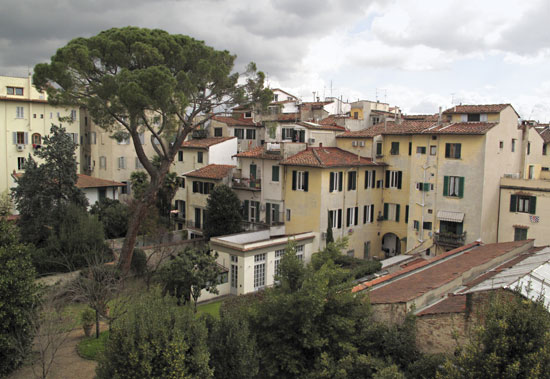
Excerpts from my journal Friday night, 26 March 2010 , while resting my feet and having a delicious dinner:
“I love Firenze! At this point, with what I know and with my familiarity and my language, I’d move to Firenze. Milan was a great place to land and gave me anchors. I find much to interest me there. My camera is always at my side and I can stay as busy as I wish, but in just an afternoon, Firenze has thrilled me with its visuals, much the way that Venezia does.
“It’s very definitely a tourist town! I think that Spring/Easter vacations have begun because the clustering tour groups are everywhere and unavoidable. (I thought that, late March, I’d still be missing them all.)
“Firenze – Florence – is ‘tighter’. Narrower streets close into the center of town around the Duomo, and many ‘pedestrian-only’. the selection of little shops, restaurants and curious places gives much to explore without going far. The antiquity is a saturated wash over the town and gives it a texture that is lush across-the-board. Like Venezia, I could photograph here forever.
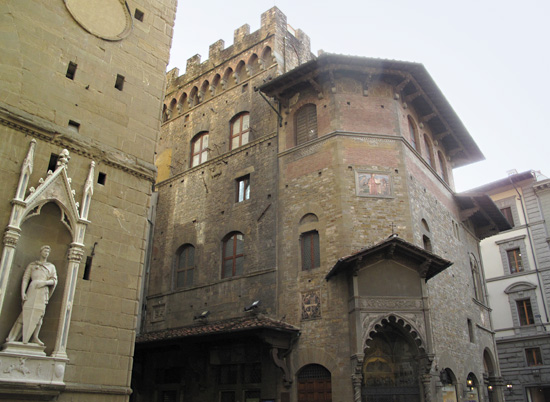
“I’m sitting at a table for two at Zá-Zá, a lovely, dar, funky, delicious trattoria just blocks from my Hotel Caravaggio. There’s been a table of four sitting near me having their meal, their drinks and their desserts. I smiled at them once… As they were leaving, the woman that had been nearest to me said goodbye – ‘Arrivederci‘. That tickles me.” (I highly recommend both the restaurant and the hotel.)
Excerpts from my journal Sunday afternoon, 28 March 2010 , on the train heading home to Milano:
“I had an incredible, full time in Firenze. So glad to have gone back, and with only an hour and 45-minute train ride, I could come for a day if I wanted to, or just an overnight.
“The city of Firenze, though packed with tourists, seems to have a quite comfortable parallel world of locals that go about their days and their work. With transportation and services so readily available, Firenze seems quite livable and pleasant.
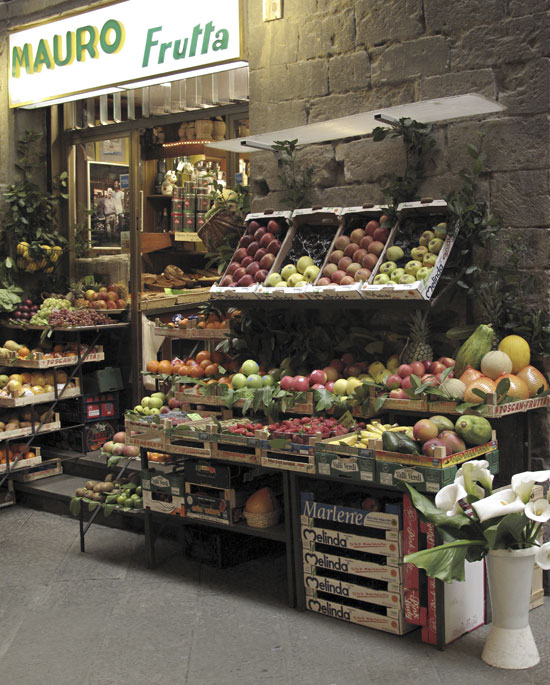
“I very quickly got the-lay-of-the-land and covered much of the “Centro Storico” – the historic center of town – in my two days there, walking close to 20 hours overall.”
Yesterday evening, a friend asked by e-mail, “Should Florence be on my to-do list? What did you especially like about it?” I responded with an off-the-cuff, spontaneous list:
Everyone’s on foot or bike! The whole historic center, large radius, is almost all pedestrian-only with very few cars and some half-size, mini-buses. Walk everywhere. (I don’t think there IS a subway, but lots of public transportation.) Streets are narrow and closer in for easy strolling. NO traffic to even have to think about.
Absolutely fascinating art, history, culture, architecture at EVERY turn!
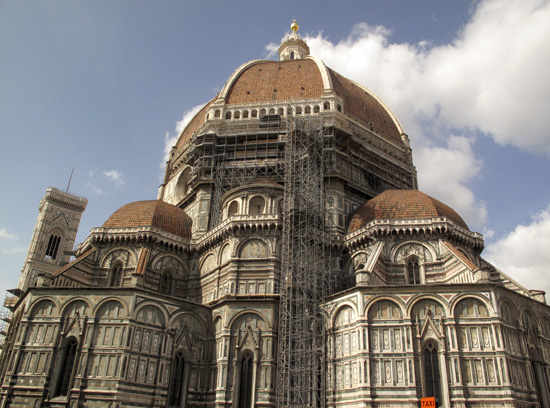

Historic sites. Historic art: Michelangelo’s David. Botticelli. Caravaggio. Dürer. Giotto. Leonardo. Lippi. Raphael. Rembrandt. Rubens. Titian. And so many more!
Visually lush. Vital, Small-city-energy.
VERY tourist-oriented (which I didn’t like having the vacation tours already swarming) but it felt like there was a parallel universe happening of people just going about their lives.
Florence doesn’t have the crazed-busy-frenzy of business-minded Milan.
Cool stuff for curious kids and adults alike. Sundials and crenulated towers.
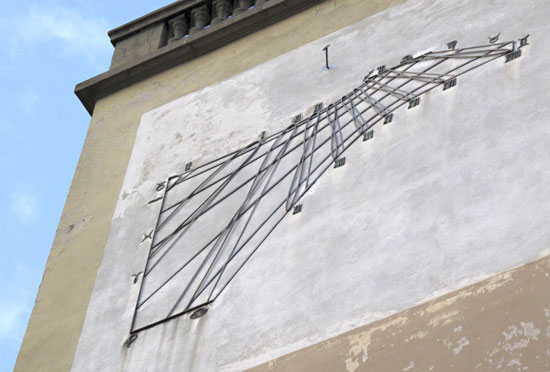
Good gelato.
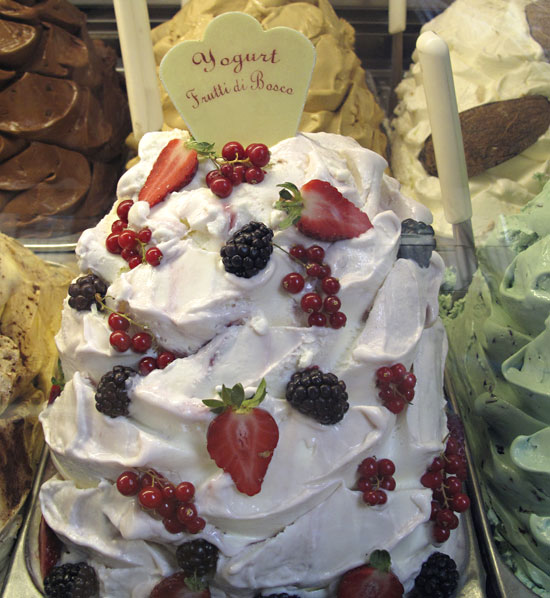
Neat bridges.
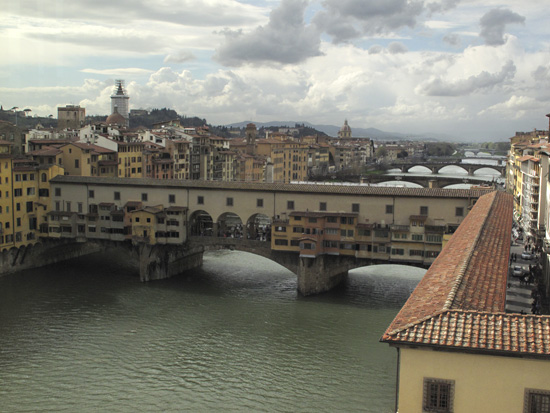
Street markets selling you-name-it.
Good cow-stomach sandwiches. (Lampredotto.)
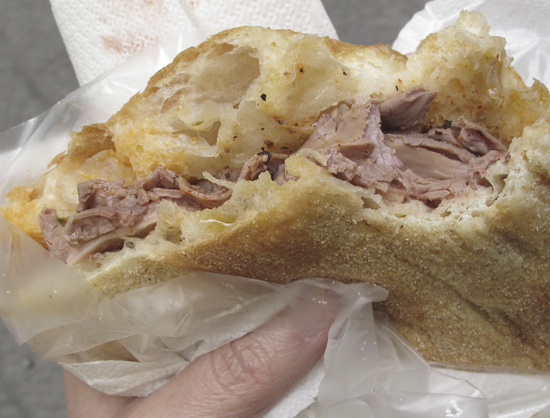
The heartland of the Renaissance.
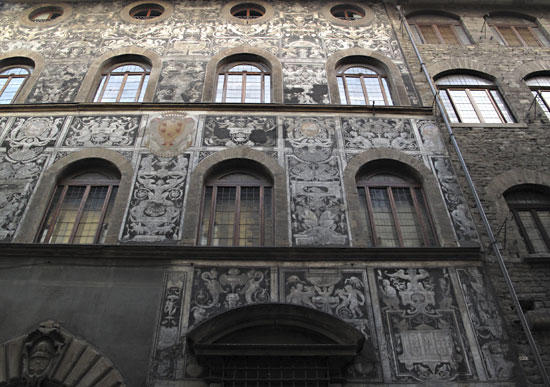
Oh. And they have curb-cuts designed for uninterrupted walking.
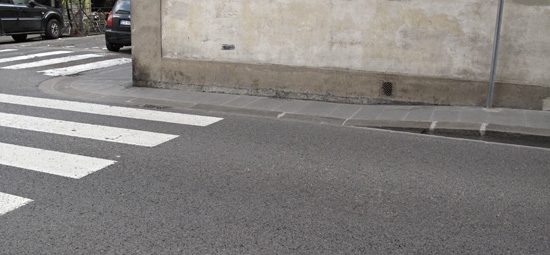
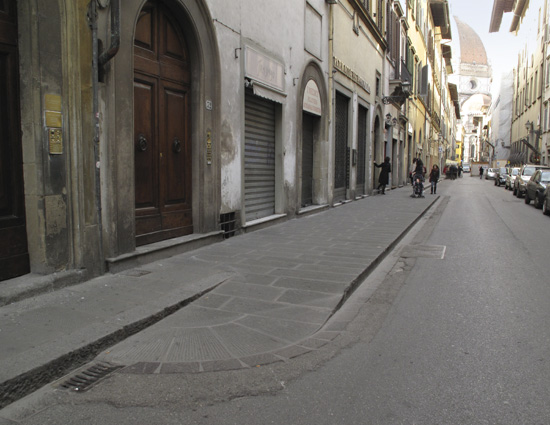
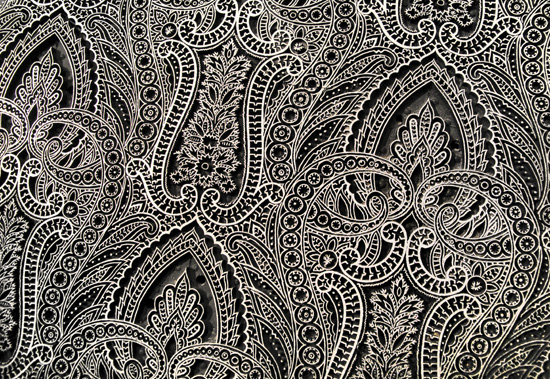
by Maureen | Mar 17, 2010 | Discoveries, Featured Articles, Graphics, Journal, Photo of the Day, Photos
When here in Milano in the summer of 2008, I stumbled upon a Zucchi Store just a half block north of the Duomo. They sell lovely household linens (sheets and towels) and they had a curious display in the window. I didn’t understand what I was seeing, so I had to go in.
Emerging up through a very large, circular hole in the first floor was a towering stack of flat wooden blocks. What were the blocks? It was then that I found out about the Zucchi Collection of wood-and-pewter blocks for printing fabric.
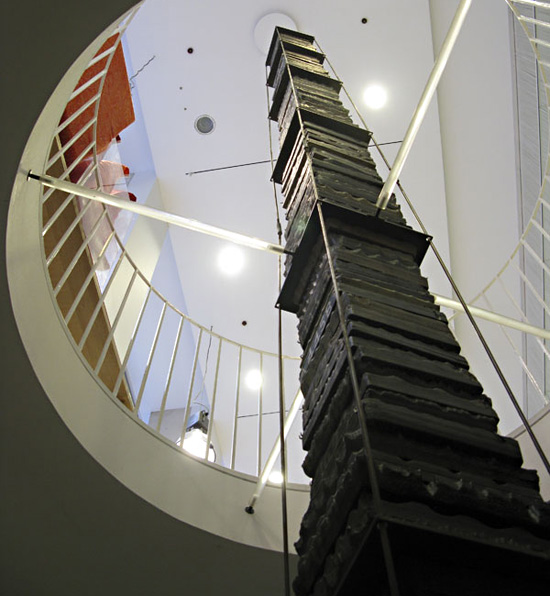
From the Zucchi Website: “The Collection’s 12,000 designs bear witness, over a period which spans three centuries from 1785 to 1935, to a fashion that was both varied and popular. Such tastes were apparent during one of the most energetic and fertile periods of European culture, which ended with the first stylistic experiments of the Art Nouveau and Art Deco movements.
“The Collection houses 56,000 printing blocks, an extraordinary number by any reckoning and one which presents concrete problems not only of space but also of storage in structures able to support the weight of many tonnes. The Collection is housed in three different storage locations: the Zucchi office in Casorezzo, the Via Foscolo location in Milan and a warehouse in Ossona.
“To make the Collection accessible not only to scholars but also to the fashion people, it was necessary to choose criteria by which the artefacts could be subdivided. The Zucchi Collection has been divided into six categories, which are identified in terms of iconographic forms: abstract, cashmere, floral, geometric, ornamental and pictorial. The Collection has been further subdivided according to the specific uses not only for the borders of the materials but also for foulards, bandanas, various ties, scarves and cravats, etc. A special data card, in computerised and paper formats, has been assigned to every series of blocks. Each of these contains various items of information about the handblock concerned, including the number of pieces which make up the structure, the design style it is capable of reproducing, its historical period and its origins. Attention has also been given to the question of conserving these structures and rightly so because the wood is sensitive material. The humidity and temperature levels require strict control and beeswax and turpentine must be applied to maintain the elasticity of the wood.”
A mere fraction of the collection has been on display on the lower floor of the Zucchi Store, including floor-to-ceiling, wall-to-wall shelves holding the numbered wood blocks. (They are now in the process of moving these blocks to another location.) Note that some designs have 3-5 different blocks to create the full design. (They are all numbered alike.) Being a lover of textiles I was immediately enamored of the collection.
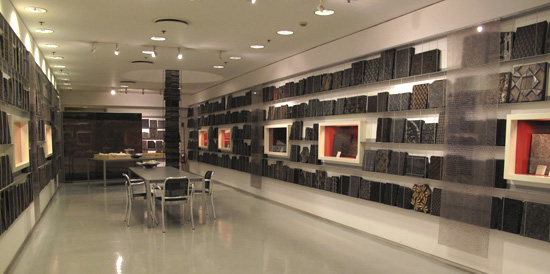
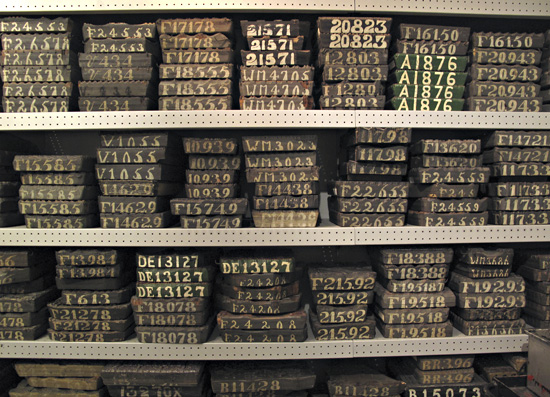
Fast-forward almost 2 years and now I’m living in Milano. Last Fall I found a curious and creative textile studio not far away named “L’Hub” on the Naviglio Grande, the “big” canal. One, they were selling vintage Zucchi linen and cotton dishtowels from the mid- and late-1900s. (Yes. I bought a bunch.) Two, they offer all sorts of creative textile classes including dyeing, sewing, construction, AND printing fabric with the centuries-old Zucchi blocks! Can you say “Sign me up!”?
I enrolled in the 3-hour class held last Saturday afternoon, taught by artist Franco Duranti (at the very far left in the next photo). Among other things, Franco is a painter, engraver, and video artist AND since 2007, he’s been creating original works with the Zucchi wood blocks! Below is a photo of the working studio at L’Hub. Some women were taking a sewing class, while two other women were also taking the fabric stamping class.
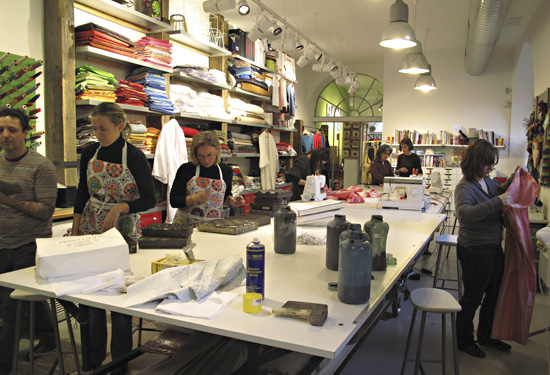
I wanted “classic”. I had just seen the Frette Textile Exhibit a week ago. I’m enthralled by the traditional fabric handwork of generations past and am especially inspired by my Great Great Grandmother’s work, done at age 12 in 1861. She crafted a cross-stitch sampler in “Turkey Red” on cream-colored cloth, and that color combination has launched me ever since my Grandmother gave me the sampler in 1975.
On the neighboring streets (on that recent day when I was getting snowflakes in my eyes) I scouted fabric stores and came away with Italian, 100% Linen. I bought a meter of fabric and took it home to prewash.
In familiarizing myself with the printing process, I chose a simple fleur-de-lis pattern printed in “carminio” – carmine red – on the linen. Note how, in this case, the block carries an “island” of cast pewter attached to the wood,
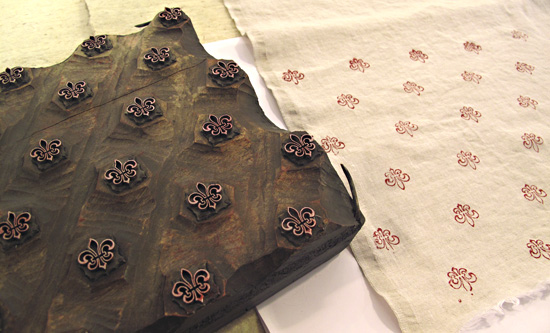
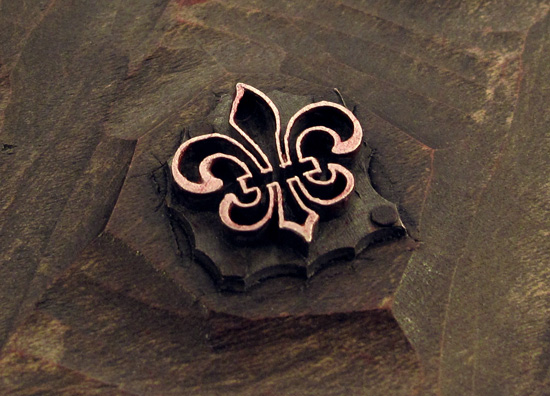
The following is an intricate, cast-pewter, paisley design from the “Cashmere” group of blocks in the collection. THIS makes my heart melt! Unfortunately, I was not able to print with this block, but printed with one I found that was as close as possible.

In gathering fabric for printing, I had also gone BACK to the Zucchi store downtown and they just happened to be having a sale! I bought two sets of sheets. One set is 100% cotton, satin finish with a subtle, printed khaki/cream pattern. I printed right over the top of the pattern to create a set of sheets like no other in the world.
I also paid a visit to the second-hand store 2 blocks away. I found white, cotton button-end pillowcases and bought all six at 2 euro each (about $2.75) When I got them home to wash them, I looked inside and noticed a… Zucchi label! Of course.
My plan now is to return to the L’Hub studio for a solo 3-hour stint to embellish the pieces I began, and to print even more.
As I wallow in Art and Design during my time here in Italy, I can’t imagine a more exhilarating addition to my list of design experiences than printing with the Zucchi handblocks at L’Hub!
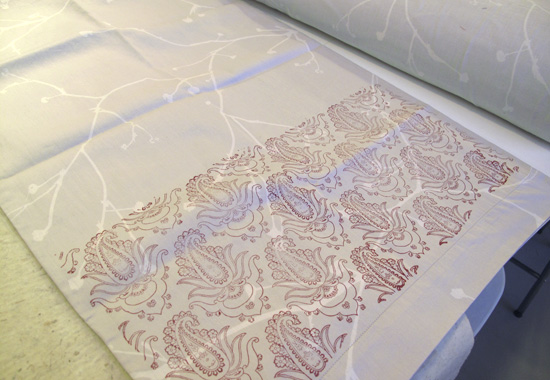
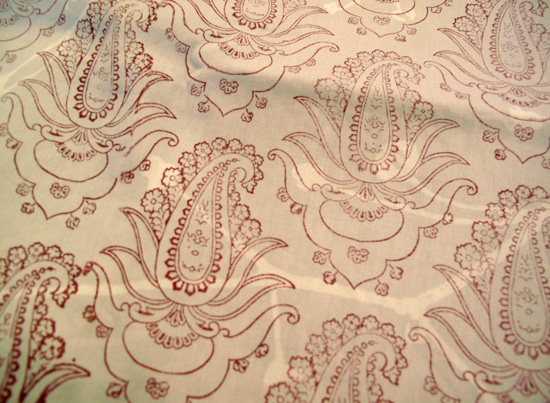
by Maureen | Mar 16, 2010 | Discoveries, Food!, Journal, Meals, Shopping & Markets
The other day I noticed the section in the meat department at the grocery store where they sell the “ends” of the prosciutto, mortadella, salami and other meats. I bought a prosciutto end for just a couple of euro; it was about the size of my fist.
Much of the meat was pretty dry, so without being sliced paper thin as is typical, it wasn’t optimal for eating. So: Prosciutto Soup! Besides. It was Sunday night and I hadn’t gotten to the grocery store in time so the pickins in my cupboard were slim.
I sauteed an onion and some garlic in olive oil. Cubed the prosciutto and threw it in the pan. I opened a can of fagioli borlotti, a bean that is white and speckled with deep magenta when freshly-shelled. I added a spoonful of vegetable bullion, but probably wouldn’t have needed to; it was WAY too salty, especially with the salt of the prosciutto. So I just kept adding water to the pot until the salt leveled out.
Everything simmered for about 3 hours and melded nicely while I sat here at the computer. The meat softened up. The beans thickened the broth a bit.
I’m probably breaking a lot of “rules” here, putting foods together in combinations quite atypical. But I came here without the food foreknowledge and preconceptions, so I simply see everything as an ingredient free-for-all. (That’s just how I cook, wherever I am.) Would a traditional cook make a soup such as this? I don’t know. If you know, please tell me!
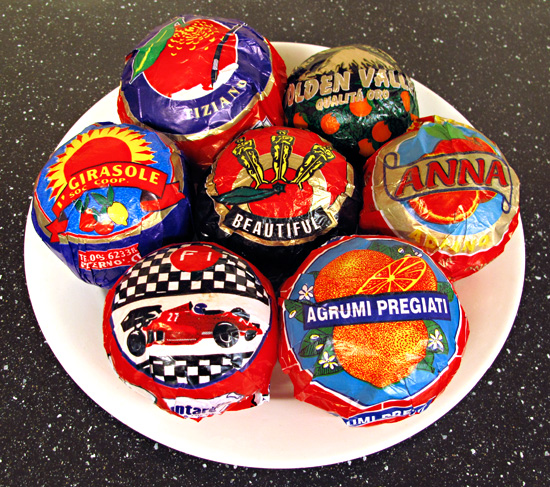
by Maureen | Mar 14, 2010 | Featured Articles, Food!, Graphics, Journal, Photo of the Day, Photos, Shopping & Markets
Yesterday morning I went to the local Saturday market on a mission: gather as many different citrus tissue wrappers as I could find. From each stall that had some of the paper-wrapped fruit, I bought two oranges, and mandarins if they were also wrapped. After cruising the whole market, I ended up toting home a lifetime’s supply of oranges, two heavy bags of citrus, plus a few wrapped pears.
At this time of year, most of the oranges seem to be the “Arance Tarocco“, the blood orange. Some I’ve purchased have been a very deep purple in color, fading to a classic, clear orange hue. Gorgeous, tasty, sweet.
The papers are such a study in design and imagery. I think my favorite is the Formula 1 Ferrari race car with the quintessential black and white checkerboard pattern. (What does any of that have to do with oranges?)

